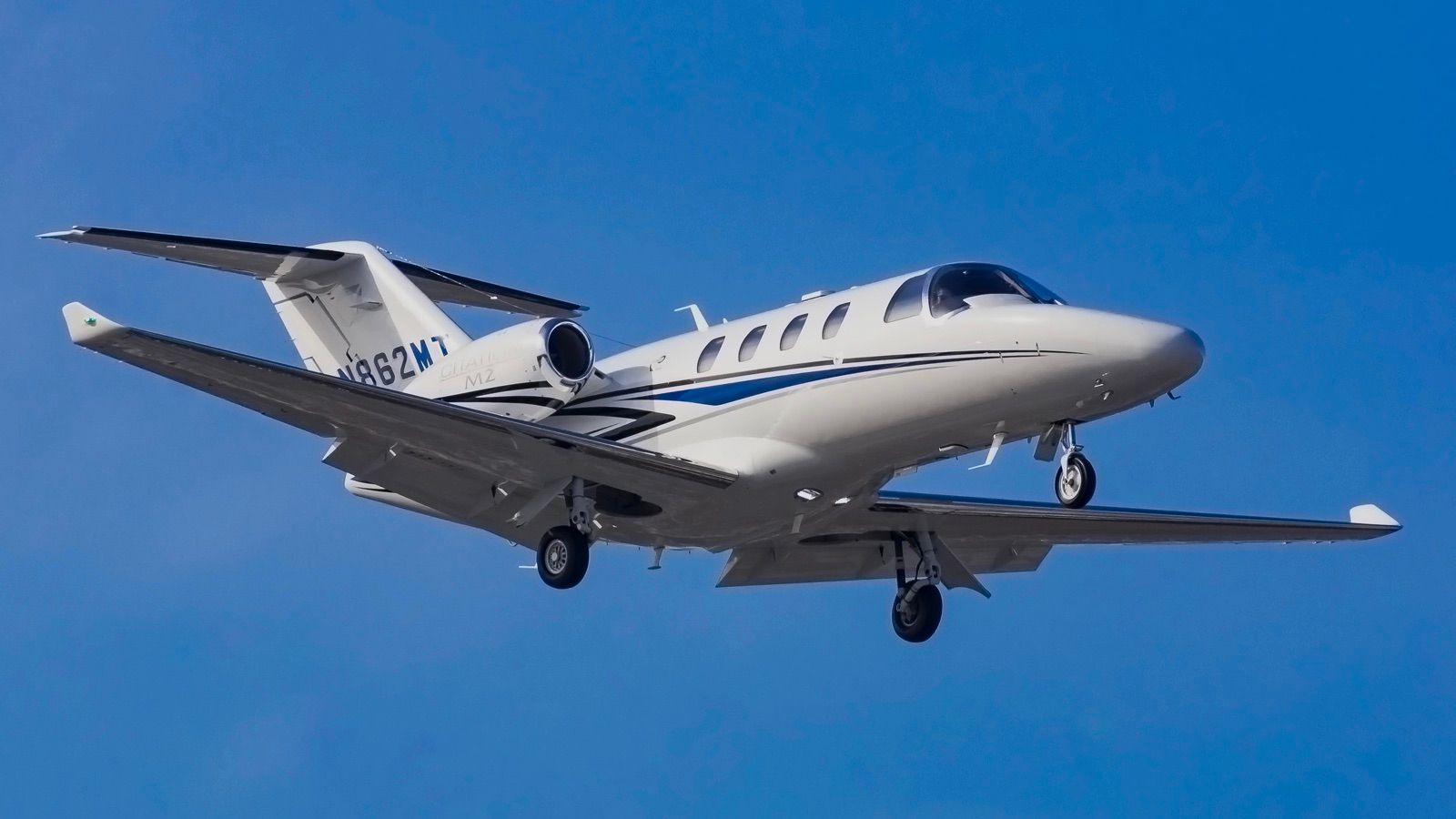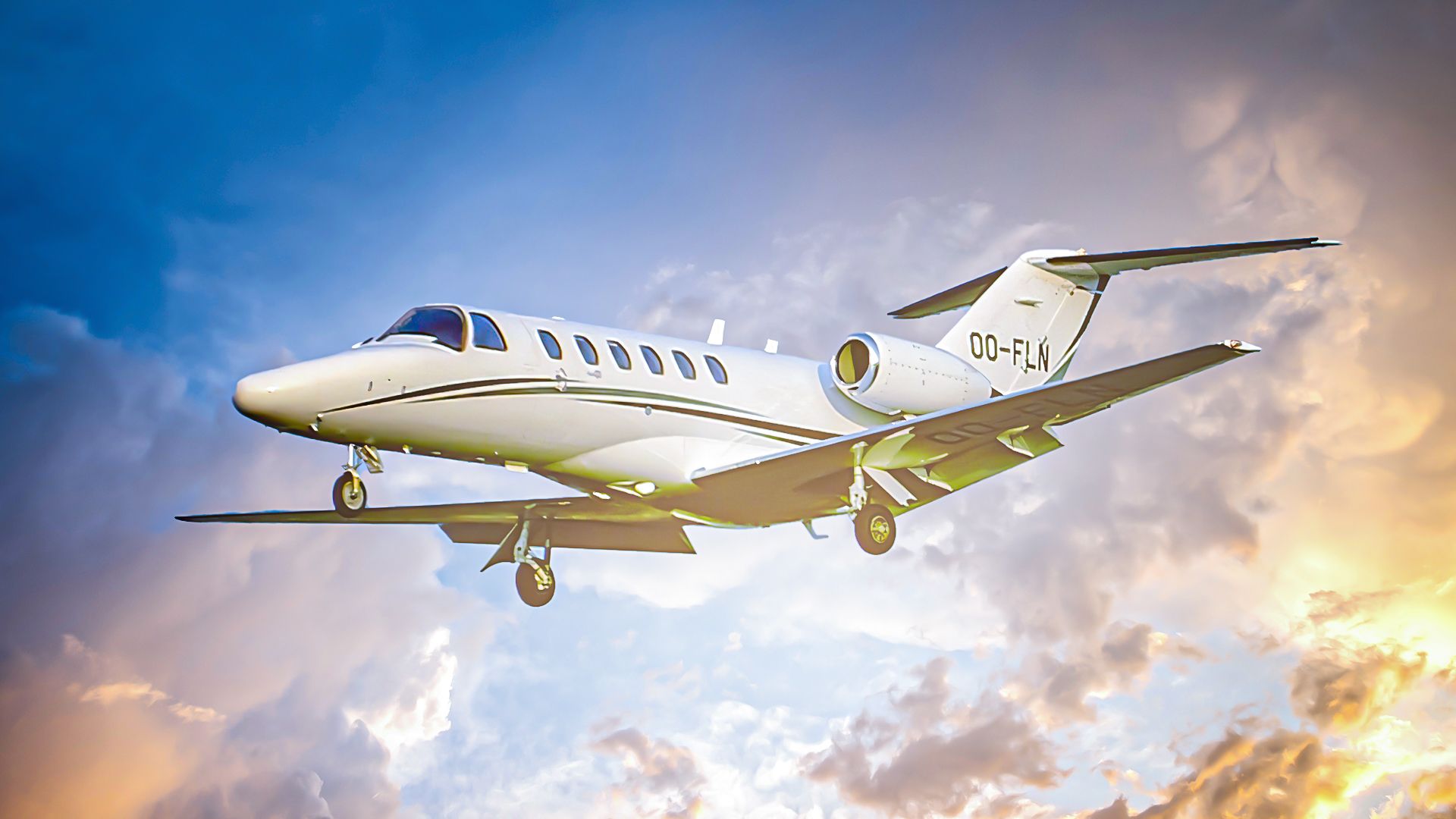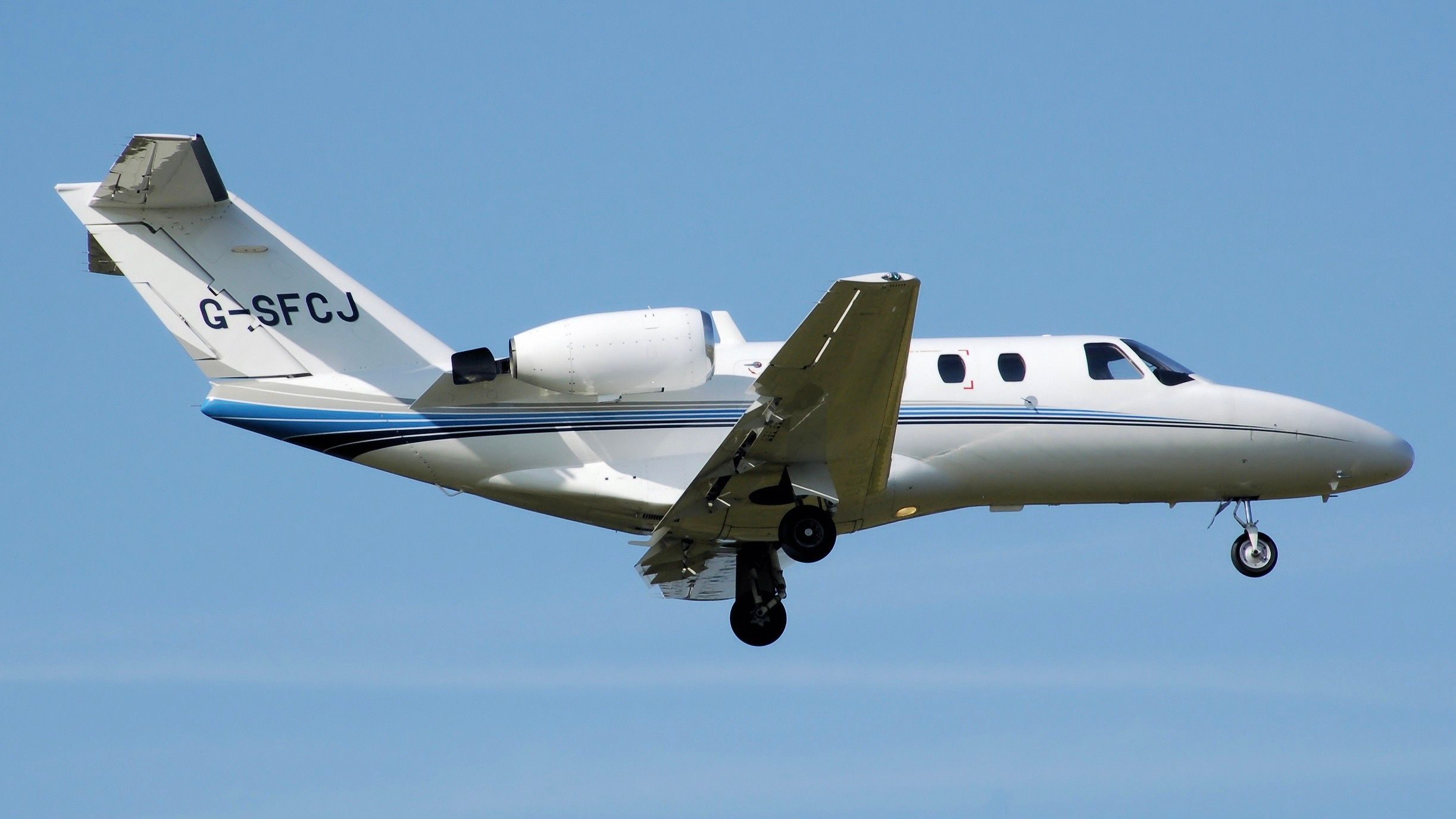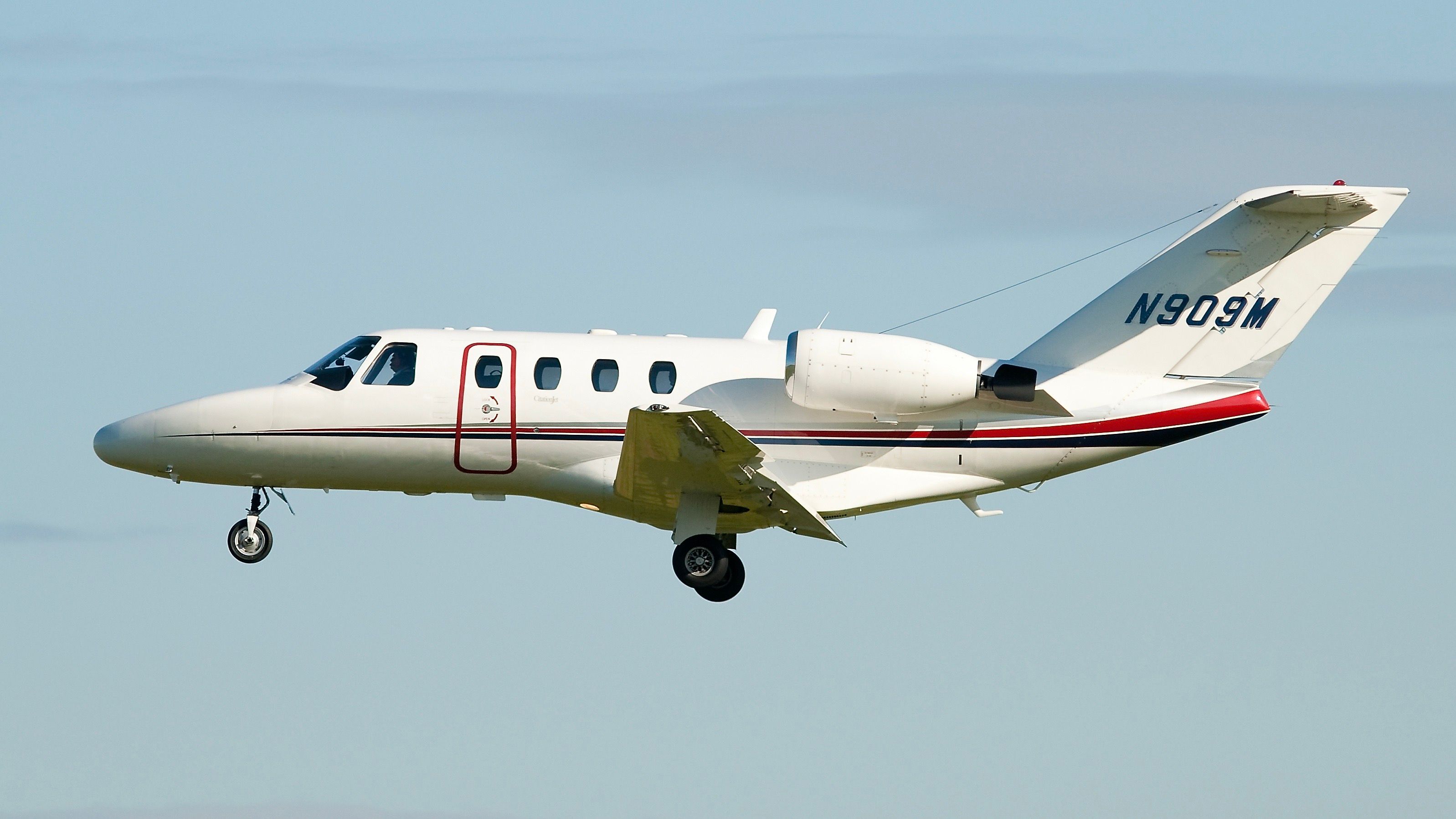Summary
- The development of the CitationJet aimed to create a faster, lighter, and more cost-effective jet than the Citation I.
- The CitationJet can cruise at 437 knots, burning 600 pounds of fuel per hour at 41,000 feet.
- The CitationJet family includes models like the CitationJet, CJ1, CJ1+, and M2, with upgrades in engines, avionics, and cabin comfort.
The Cessna CitationJet is part of the Cessna Citation family, a series of light business jets. It was launched in October 1989 at the NBAA convention and first flew on April 29th, 1991. The aircraft received FAA certification on October 16th, 1992, and the first delivery took place on March 30th, 1993.
The CitationJet series has Williams FJ44 engines and features a cantilever wing and T-tail. It has retractable tricycle landing gear and a pressurized six-seat cabin and is certified for single-pilot operation. Let’s find out more about the CitationJet, its development and variants, and how fast it can fly.
CitationJet development
Cessna started developing the CitationJet when the Citation I was discontinued in 1985. This was partly due to the increasing price of the Pratt & Whitney JT15D-1 engines, which made them uncompetitive with the larger straight-wing Citations. Cessna believed that there was still a market for a light four- to six-seater jet with low operating costs and a lower purchase price.
They wanted it to be able to operate on short runways that were usable by twin-piston-engined light aircraft, which had made the Citation I successful. The Citation I was known for its low cruise speed compared to its competitors, such as the Citation Bravo or Citation V. Cessna needed to create a faster jet with low operating costs. Cessna created a lighter airframe and added less expensive engines with lower thrust. In earlier variants, they also removed the step in the center aisle, where the spar was in the cabin.
The CitationJet’s supercritical wing was developed by NASA and Boeing. The new Williams FJ44 engines produce 1,900 pounds of thrust and are tail-mounted. The fuselage was slightly smaller than the Citation I, but it had a lower aisle. The cockpit was fitted with EFIS avionics. It has a range of 1,500 nautical miles or 2,800 kilometers.
The need for speed
At a normal cruise, the CitationJet was 29 knots faster than the Citation I and outperformed it on every level despite having less engine thrust. With four passengers, it can cruise at 437 knots, 809 kilometers per hour, or 503 miles per hour. At 41,000 feet, it can burn 600 pounds of fuel per hour, traveling at 342 knots.
CitationJet Specifications:
|
Model |
M2 (CJ1) |
|---|---|
|
Crew |
1 or 2 |
|
Max. passengers |
7 |
|
Length |
42 ft 7 in (12.98 m) |
|
Height |
13 ft 11 in (4.24 m) |
|
Wingspan |
47 ft 3 in (14.40 m) |
|
Wing area |
240 ft2 (22.3 m2) |
|
Wing sweep |
0 degrees |
|
Cabin section |
57 in (1.45 m) height, 58 in (1.47 m) width |
|
Cabin length |
11 ft (3.35 m) |
|
MTOW |
10,700 lb (4,853 kg) |
|
Fuel capacity |
3,296 lb (1,495 kg) |
|
Fuel volume |
492 gal (1,862 L) |
|
Max. payload |
1,410 lb (640 kg) |
|
Turbofan × 2 |
FJ44-1AP-21 |
|
Thrust (each) |
1,965 lb (8.74 kN) |
|
Max. cruise |
404 kn (748 km/h) |
|
Max. Range |
1,550 nmi (2,871 km) |
|
Takeoff |
3,210 ft (978 m) |
|
Landing |
2,590 ft (789 m) |
|
Ceiling |
41,000 ft (12,497 m) |
|
Max. climb rate |
3,698 fpm (18.8 m/s) |
 Variants of the CitationJet
Variants of the CitationJet
The CitationJet developed over time with different variants and differences:
- CitationJet: serial numbers 0001 to 0359 had the Williams FJ44-1A engines and Tamarack winglets.
- CitationJet CJ1: serial number 0360 to 0599 had the same engines and there was a slight increase in maximum take-off weight. Rockwell Collins Pro Line 21 avionics were fitted.
- CitationJet CJ1+: serial number 0600 upwards received the Williams FJ44-1AP engines. The Pro Line 21 avionics now had FADEC engine control. It was FAA certified in 2005.
- The CitationJet M2: the engines were upgraded to the Williams FJ44-1AP-21 turbofans and avionics were upgraded to Garmin G3000 and the cabin was made more comfortable.
Photo: InsectWorld | Shutterstock
More on the CitationJet M2
The CitationJet M2 engines were more efficient, with 10-15% more cruise thrust and 5% hot and heavy thrust. It also has a slightly wider wing and smaller winglets. The M2 was introduced in September 2011 and had its first flight on March 9th, 2012. It can climb faster than the CJ1+ and is faster by 22 knots. On a high-speed cruise with one pilot and four passengers, it can travel 1,150 nautical miles or 2,130 kilometers in 2 hours and 49 minutes. It can climb to 41,000 feet in 24 minutes and 27% faster than its closest competitors.
Increased demand
When it was launched in 1989, Cessna estimated that demand for the aircraft would mean that 1,000 CitationJets would be built over the next ten years. At the time, the aircraft cost $2.4 million, whereas in today’s money, it would have cost $5.9 million. Over twenty years after its first flight, 1,450 CitationJets were produced. By June 2017, 2,000 CitationJet variants had been built and delivered, with over five million flight hours.
The CitationJet M2 became Cessna’s entry-level jet after the Citation Mustang ceased production in May 2017. The 250th M2 was delivered on June 15th, 2020, and the fully equipped price is around $6.15 million.




![Cessna 525 CitationJet M2 [N95KL]](https://static1.simpleflyingimages.com/wordpress/wp-content/uploads/2024/01/shutterstock_661471732.jpg)